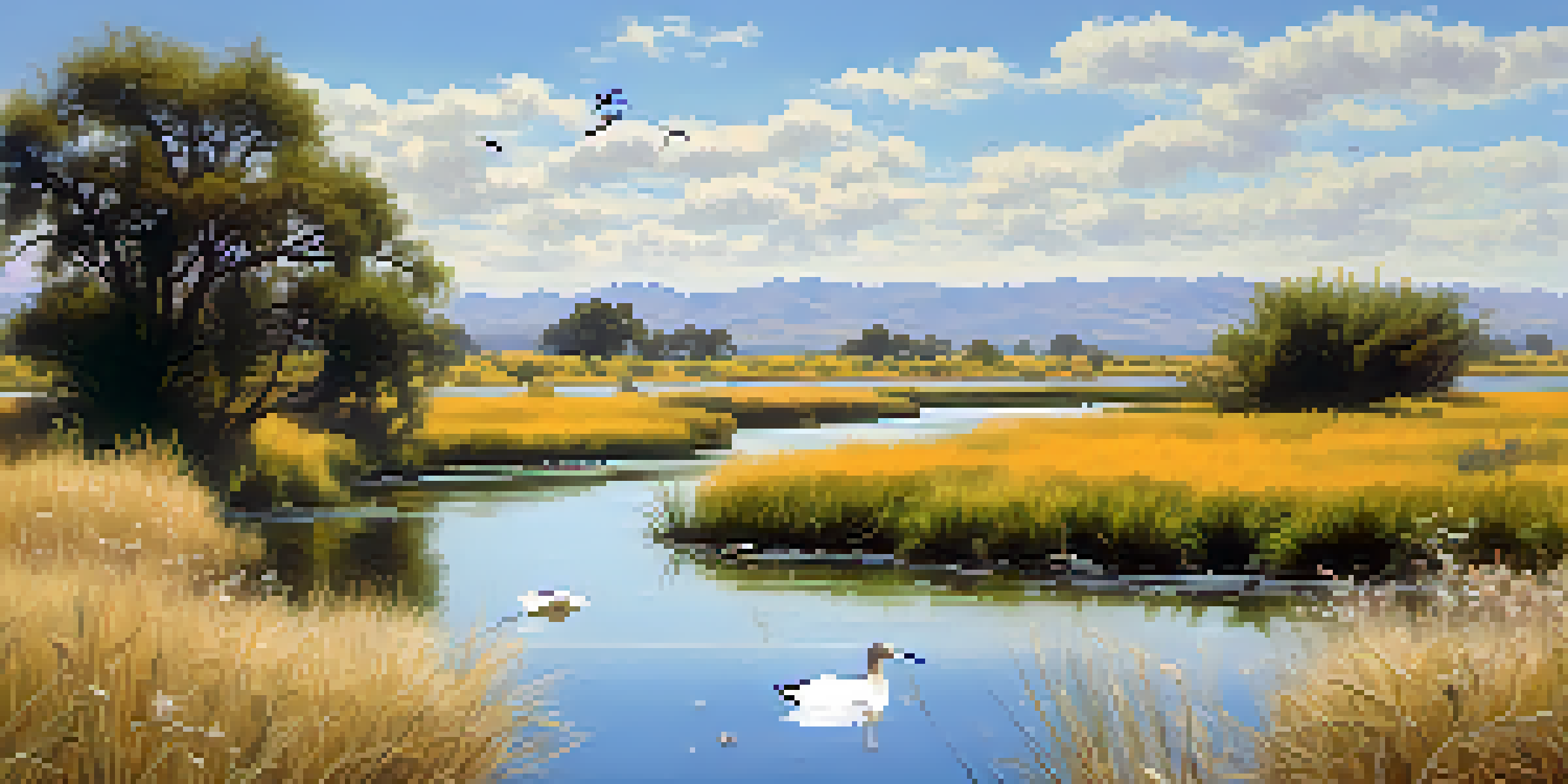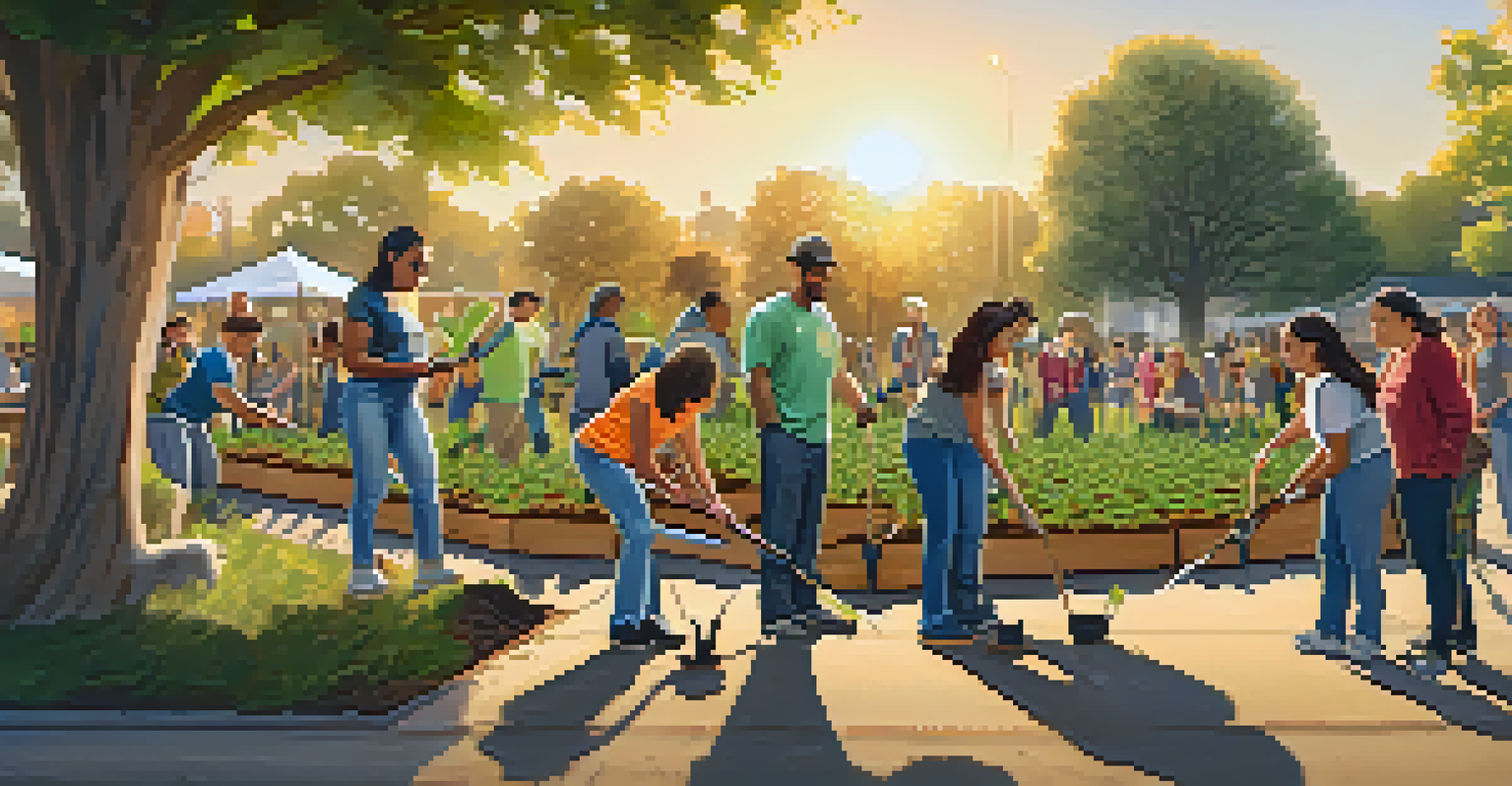Biodiversity in San Jose: Protecting Local Flora and Fauna

Understanding San Jose's Unique Biodiversity
San Jose is home to a rich tapestry of biodiversity, showcasing various plant and animal species. From the lush parks to the vibrant urban gardens, this city plays a crucial role in maintaining ecological balance. Biodiversity refers to the variety of life in a particular habitat, and in San Jose, it includes everything from native wildflowers to urban wildlife.
In every walk with nature one receives far more than he seeks.
The diverse ecosystems not only support wildlife but also provide essential services such as clean air, water filtration, and soil health. For instance, the Coyote Creek corridor is a vital habitat for many species, including migratory birds and native fish. Understanding this biodiversity helps us appreciate the intricate connections between all living things.
However, urban development and climate change pose threats to these ecosystems. Recognizing the importance of local flora and fauna is essential for fostering a healthy environment, making it vital for residents and policymakers alike to prioritize sustainability.
The Role of Native Plants in Ecosystem Health
Native plants are the unsung heroes of local ecosystems, providing food and habitat for countless species. In San Jose, planting native flora can enhance biodiversity significantly, as these plants are adapted to the local climate and soil conditions. Moreover, they require less water and maintenance compared to non-native species, making them an eco-friendly choice for gardeners.

For example, the California poppy, our state flower, not only adds beauty to landscapes but also attracts pollinators like bees and butterflies. This interaction is crucial for maintaining healthy ecosystems, as pollinators play a significant role in plant reproduction. By choosing native plants, residents can contribute to the overall health of their local environment.
San Jose's Biodiversity is Vital
The unique biodiversity of San Jose supports ecological balance and provides essential services like clean air and water filtration.
Additionally, native plants can help mitigate issues related to invasive species, which often outcompete local flora. By fostering the growth of indigenous plants, San Jose can combat these invaders, ensuring that the natural balance is preserved and enhanced.
Threats to Local Wildlife in San Jose
Despite its rich biodiversity, San Jose faces numerous threats that impact local wildlife. Urbanization, habitat loss, and pollution are just a few challenges that endanger the flora and fauna of the region. As neighborhoods expand and natural habitats are paved over, many species struggle to find food and shelter.
The greatest threat to our planet is the belief that someone else will save it.
For instance, the San Francisco garter snake, which is native to the area, has seen its population decline due to habitat destruction and fragmentation. Protecting these species requires concerted efforts from the community to advocate for conservation programs and smart urban planning. By promoting awareness, residents can play a significant role in protecting these vulnerable species.
Moreover, pollution from runoff and litter can degrade habitats, making them less viable for wildlife. By reducing waste and supporting clean-up initiatives, citizens can help create a safer environment for local species to thrive.
Importance of Community Involvement in Conservation
Community involvement is pivotal for the success of biodiversity conservation efforts in San Jose. Local residents can participate in various initiatives, such as tree planting events, wildlife surveys, and habitat restoration projects. These activities not only benefit the environment but also foster a sense of community and shared responsibility.
For example, organizations like the San Jose Conservation Corps engage volunteers in hands-on projects that restore local ecosystems. By working together, community members can make a noticeable impact on their surroundings, helping to protect endangered species and enhance green spaces. This collaborative spirit is essential for creating lasting change.
Community Action Fuels Conservation
Active community involvement in conservation efforts, such as habitat restoration and education, is crucial for protecting local wildlife.
Furthermore, education plays a crucial role in mobilizing the community. Workshops and informational sessions can inspire residents to adopt sustainable practices, such as reducing water usage and creating wildlife-friendly gardens. The more informed the community is, the more effective their conservation efforts will be.
Restoration Projects Making a Difference
San Jose is home to numerous restoration projects aimed at revitalizing local ecosystems. These initiatives often focus on repairing damaged habitats and reintroducing native species. One notable project is the restoration of the Guadalupe River, which has seen efforts to remove invasive plants and restore natural vegetation.
Such projects not only enhance biodiversity but also improve water quality and provide recreational opportunities for residents. By restoring natural habitats, we create spaces where wildlife can flourish, and communities can connect with nature. This dual benefit is a powerful motivator for ongoing conservation efforts.
Moreover, these restoration initiatives often rely on community support and engagement. When locals get involved, they not only contribute their time and skills but also develop a deeper appreciation for their natural surroundings. This connection encourages a culture of stewardship that can last for generations.
How Climate Change Impacts Local Biodiversity
Climate change is an overarching threat that affects biodiversity around the globe, including right here in San Jose. Rising temperatures, shifting precipitation patterns, and extreme weather events can disrupt the delicate balance of local ecosystems. These changes may lead to the loss of species that cannot adapt quickly enough to their new environments.
For example, some native plants may struggle to survive in altered climatic conditions, leading to a cascading effect on the animals that rely on them for food and shelter. This interconnectedness highlights the importance of understanding how climate change can influence local biodiversity and the need for adaptive conservation strategies.
Climate Change Threatens Ecosystems
Rising temperatures and changing weather patterns due to climate change pose significant risks to San Jose's local biodiversity.
Addressing climate change requires collective action, from reducing carbon footprints to supporting sustainable practices. By making conscious choices, residents can contribute to a healthier planet and protect the biodiversity that makes San Jose unique.
Future Steps for Biodiversity Conservation in San Jose
Looking ahead, San Jose has the potential to be a leader in biodiversity conservation. By implementing effective policies that prioritize green spaces and sustainable development, the city can protect its unique flora and fauna for future generations. This includes creating more parks, enhancing urban forestry programs, and supporting wildlife corridors.
Additionally, fostering partnerships between local governments, nonprofit organizations, and community members can amplify conservation efforts. Collaborative projects can leverage resources and expertise, making a more significant impact on preserving local biodiversity. Together, these stakeholders can create innovative solutions to the challenges facing San Jose's ecosystems.

Lastly, ongoing education and awareness campaigns will be essential for sustaining these efforts. By keeping biodiversity in the conversation and encouraging active participation, the community can build a culture of conservation that values and protects the natural heritage of San Jose.